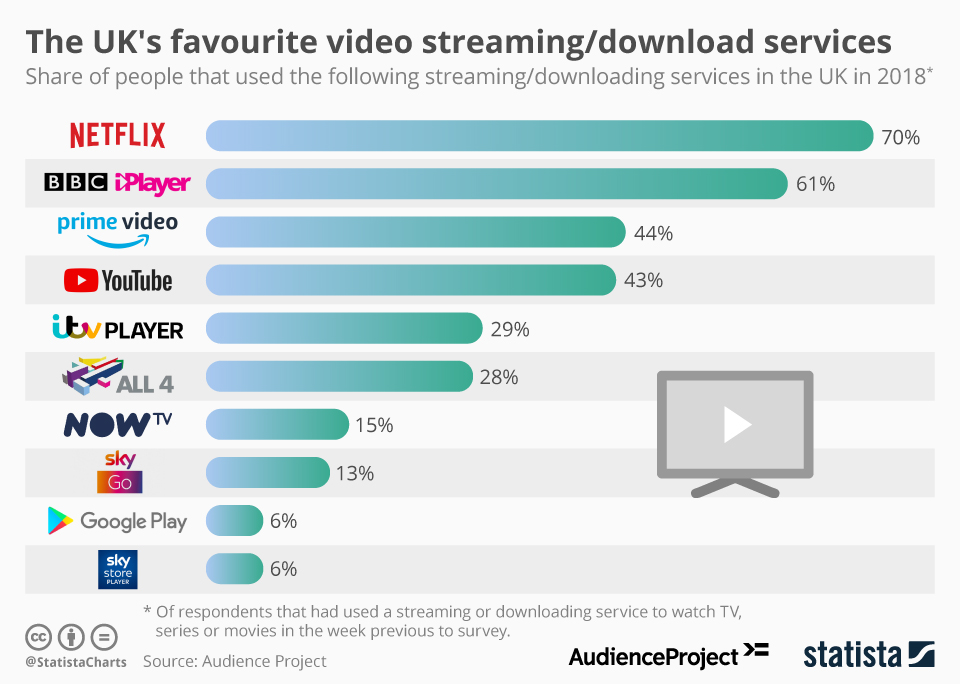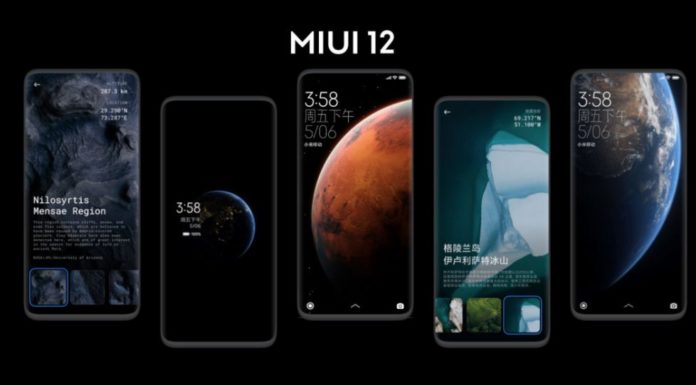But YouTube watching on TVs beats out Amazon and Hulu combined in the US, a new Nielsen study says.
Netflix is big and it’s getting bigger. And we’re not just watching it on our phones and tablets: That dominance translates to the biggest screen in US homes too, according to a new study Tuesday from TV-measurement giant Nielsen. Netflix gobbles up 31% of streaming to TVs, beating every other service.
In what may come as a surprise, YouTube is a close second. The massive Google video service, most often associated with short clips you watch on your phone, commanded 21% of TV streaming in the last three months of 2019, Nielsen said. Hulu came in third with 12%, followed by Amazon at 8%.
But everything else — a kitchen-sink grouping that included free, ad-supported options such as Tubi as well as brand new subscription services such as Disney Plus — represented a 28% chunk of viewership, almost as big as Netflix itself.
“Make no mistake, the proliferation of on-demand streaming services is the most profound media disruption of the last half-century,” Peter Katsingris, Nielsen’s senior vice president of audience insights, said in a “special streaming-wars edition” of its quarterly Total Audience Report.
The so-called streaming wars, a seven-month window when a parade of new big-budget services are launching, are pitting a raft of new streaming services against each other and established video competitors. Apple and Disney were first to enter the fray in November, and three more companies are launching their options, backed by billions of dollars in investment, in the first few months of 2020. The outcomes of these skirmishes will not only shape the future of TV but also affect how you watch and pay for your favorite shows and movies.
The ballooning number of services has raised the spectre of subscription fatigue. Like many studies, Nielsen found that the vast majority of people subscribe to one to three paid streaming services. But as options expand, we aren’t showing signs of pulling back: 93% say they’ll either increase or keep their existing streaming subscriptions.
When adding a new, paid service, more people said they’d simply add on a new one at an additional cost (38%) rather than swapping out one they already have (27%). And 13% say they would “sample” new content by borrowing log-in credentials from someone they know.
When people do cancel a paid service, the majority (42%) say they quit because they felt they weren’t using it enough to make the cost worthwhile. People who sign up for just one piece of programming are in the minority, with 16% saying they cancelled a service after viewing the only piece of content, though another 20% said they cancel because they’ve watched everything they were interested in.
The number of original shows and streaming services we can watch them on is exploding. US consumers had access to 646,152 unique program titles to choose from across linear and streaming services in 2019, up 10% from the previous year. About 9% of them were available exclusively on an subscription video service such as Netflix.
Nielsen projects digital media spending along will top $500 million by 2023. By comparison, that’s nearly as much as the $600 million spent on all global media last year.













![Hotstar Premium Cookies 2019 [*100% Working & Daily Updated*] Hotstar Premium Cookies 2019 [*100% Working & Daily Updated*]](https://tahav.com/wp-content/uploads/2019/11/Hotstar-Premium-Cookies-Free-100x70.jpg)



